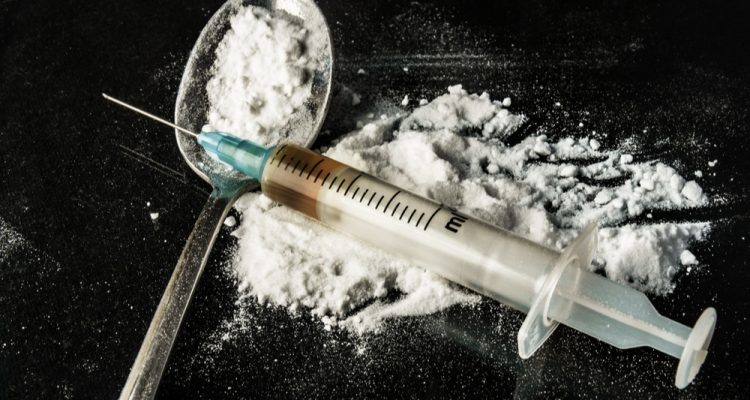Rehab programs for Speedball abuse is a custom treatment plan that fits the conditions of the patient. Abusing this substance is fatal and one needs medical assistance to safely recover from this unhealthy behavior. For an individual to escape this addiction, they must enroll into rehab as they will receive proper care that will address the recovery of their overall well-being.
Speedball addiction poses serious risks since the depressive effects of heroin and the stimulant effects of cocaine can result in serious health issues like overdose, cardiac issues, respiratory distress, and even death. An organized and thorough approach is offered by Speedball treatment to assist people in conquering their addictions, fostering healing, and regaining general well-being.
What are the Reasons Behind Speedball Addiction
People may become addicted to heroin and cocaine mixture for some reasons. These motives consist of:
- Speedball’s intensified high is created by fusing the sedative and euphoric benefits of heroin with the energizing and stimulating properties of cocaine. Some people may find the mixture to be very appealing because it can produce a powerful rush and a well-balanced high.
- Increased Tolerance: People who have used heroin or cocaine for a while may become more tolerant to its effects, requiring higher dosages to get the same high. Users may be able to use less of each drug while still getting the desired results by combining the two substances.
- Always seeking the “Perfect High”: Addiction sometimes occurs as a result of users’ constant attempts to match or even top their original high. They could think that utilizing both drugs at once will result in a more potent or enjoyable high.
- Self-Medication: For underlying health or psychological problems, some people use this substance as a form of self-medication. They might take the chemical cocktail to cope with emotional distress, traumatic experiences, depression, anxiety, or other mental illnesses.
- Peer pressure and other social influences may also have an impact on how Speedball addiction develops. Being exposed to a social environment where illicit substance use is common may raise the likelihood of trying the drug combination out and subsequently developing an addiction to it.
It’s crucial to remember that addiction is a complicated disorder, and each person’s addiction to Speedball may have different causes. Understanding these causes can assist in guiding the development of efficient treatment plans to address the root causes of addiction.

What are the Components of Speedball Addiction Treatment
Individuals recovering from addiction can receive full assistance and care via the use of several components found in Speedball treatment programs. These elements consist of:
Detoxification and Withdrawal Management
Often, the initial stage of an addiction treatment program is detoxification. It entails carefully eliminating the medicine from the person’s system while controlling any potential withdrawal symptoms. To protect the safety and comfort of the person going through withdrawal, medical personnel continuously monitor the detoxification process.
Medical Intervention and Medication-Assisted Treatment
Medical intervention is essential to Speedball rehab. Medical practitioners may recommend drugs to treat underlying mental health issues, control cravings, or lessen the symptoms of withdrawal.
Individual Therapy and Counseling
In rehabilitation programs, individual therapy sessions are essential. They offer a private, secure setting where people can investigate the root causes of their addiction, learn coping mechanisms, and establish recovery objectives. To treat problems including trauma, co-occurring mental health illnesses, and behavioral patterns that fuel addiction, therapists and counselors use a variety of evidence-based techniques.
Group Therapy and Support Networks
People get the chance to interact with others who have gone through comparable experiences through group therapy. A sense of belonging and accountability can be fostered by discussing experiences, difficulties, and triumphs in a constructive group environment. During and after rehab, support networks like 12-step programs or other recovery organizations can offer continuous assistance and direction.
Holistic Approaches
Programs for addiction treatment use holistic approaches including art therapy, yoga, meditation, and mindfulness exercises. These methods aid in stress management, the development of appropriate coping mechanisms, and the advancement of general well-being. They deal with the mental, emotional, and physical elements of rehabilitation and give people the means to stay sober.
Aftercare and Relapse Prevention Strategies
Planning for aftercare after a primary treatment program is over is essential for sustaining long-term recovery. Continued counseling, involvement in support groups, job training, sober living arrangements, and ongoing medical care are all examples of aftercare. Relapse prevention techniques are also covered, giving people the knowledge and abilities to identify triggers, create healthy coping mechanisms, and overcome potential obstacles.
By including these elements in Speedball recovery, people get a thorough and tailored approach to dealing with their addiction, encourage healing, and support their path to long-term recovery.
What are the Goals of Speedball Recovery Programs
The main objectives of Speedball’s addiction treatment programs are to assist patients in overcoming their addictions, achieving recovery, and enhancing their general well-being. These aims comprise:
Sobriety and Physical Stabilization
The main objective of Speedball addiction treatment is to assist patients in achieving and maintaining sobriety. Inpatient detox can help a patient remove harmful toxins brought by addiction. A further goal of treatment programs is to stabilize and enhance physical health. To do this, they address any health problems brought on by Speedball misuse, provide the necessary medical measures, and encourage general well-being.
Psychological and Emotional Healing
There are frequently underlying psychological and emotional issues with Speedball addiction. Through counseling, individual therapy, and other evidence-based methods, treatment programs assist individuals in resolving these problems. The objective is to establish healthy coping skills, enhance mental health, and recognize and address the underlying reasons for addiction.

Prevent Relapse and rebuild life skills
Relapse prevention is a key component of rehab. Treatment programs equip patients with the knowledge and methods required to recognize triggers, build coping skills, and design relapse prevention plans. To guarantee long-term rehabilitation, emphasis is placed on ongoing assistance and aftercare. Rebuilding fundamental life skills that may have been harmed by substance abuse is another goal of a treatment program. These abilities, which include problem-solving, goal-setting, communication, and decision-making, help people reintegrate into society and have fruitful, satisfying lives while in recovery.
Restoring Relationships and Rebuilding Support Networks
Relationships and social connections are frequently strained by addiction. Treatment programs assist patients in mending broken relationships, setting up sound boundaries, and re-establishing their social networks. This may entail interacting with family members, providing family therapy sessions, and promoting involvement in peer networks or support groups.
Enhancing Overall Well-being
Programs for treating addiction place a high value on elevating patients’ overall health. This entails cultivating emotional toughness, boosting physical health, and encouraging participation in self-care and personal development activities. Incorporating holistic strategies, such as yoga, art therapy, and mindfulness exercises, can improve general well-being.
What is the Recovery Rate of Long-Term Rehab
Determining the success rate of addiction treatment programs can be difficult because it varies depending on several variables, including the patient’s dedication to treatment, the program’s caliber, the presence of co-occurring disorders, and post-treatment support. Even though there may not be many precise numbers on Speedball treatment success rates, we can look at data on general drug misuse treatment and recovery in the US to gain some understanding.
The Substance Misuse and Mental Health Services Administration (SAMHSA) claims that the success rate of drug misuse treatment programs is generally favorable. SAMHSA’s National Survey on Drug Use and Health (NSDUH) states that 19.4 million American adults aged 12 and older were diagnosed with a substance use disorder (SUD) in 2019. 2.5 million people with SUD received specialized care.
Success rates in addiction treatment might change depending on the length, rigor, and scope of the program. Higher success rates are typically achieved with longer treatment periods and comprehensive programs that address both physical and psychological issues.
Long-term recovery is also aided by involvement in support groups, aftercare programs, and regular follow-up care. Although exact success rates for rehab programs are not easily accessible, people should look for recognized, successful programs that are founded on data. Making educated decisions about recovery can be facilitated by speaking with healthcare specialists, getting suggestions, and investigating specialized treatment facilities.
